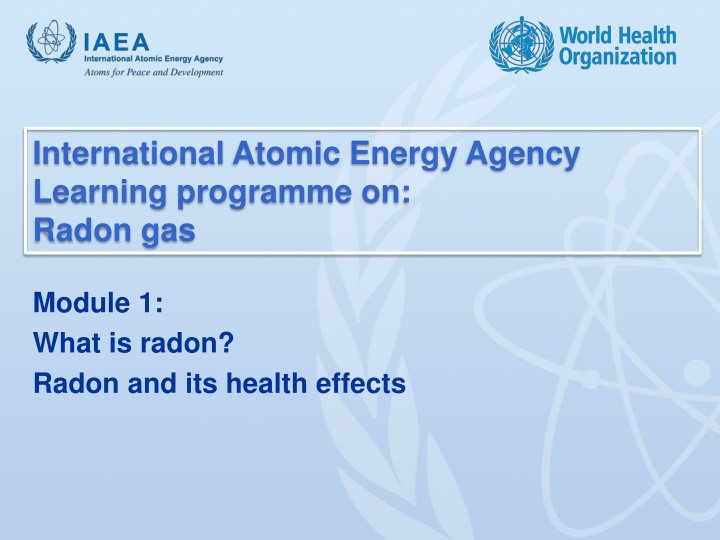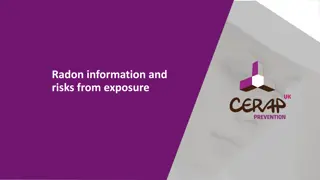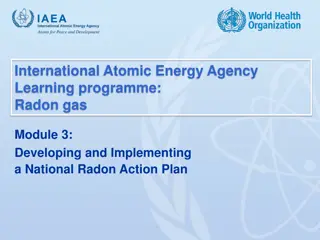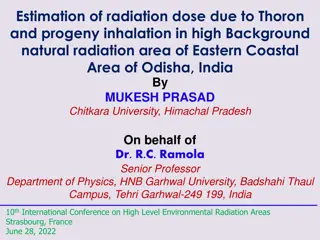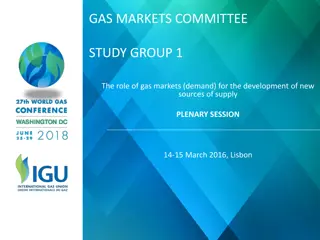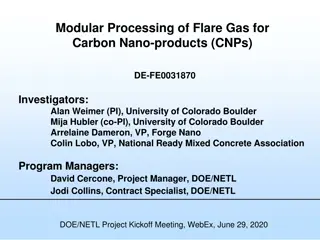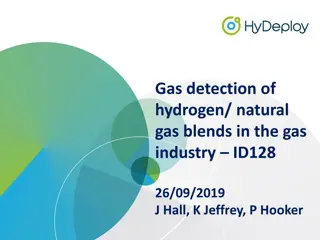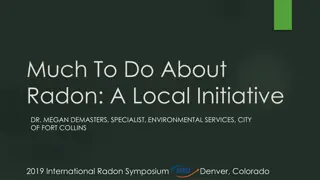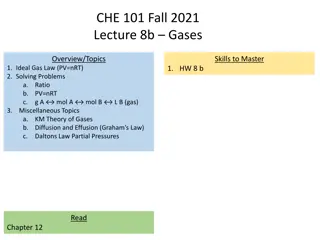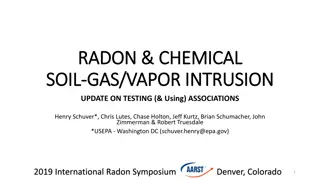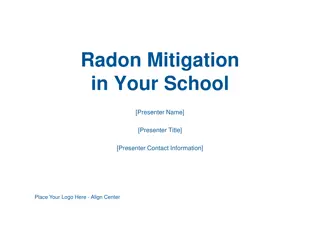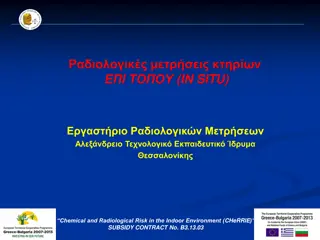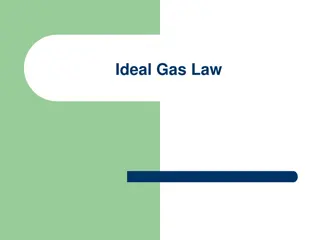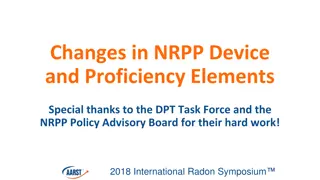Radon Gas and its Health Effects
This module explores radon gas, its sources, and the health risks associated with exposure to it. Learn about the International Atomic Energy Agency's learning program on radon gas to understand the importance of addressing this environmental concern. Discover the impact of radon on human health and measures to mitigate its harmful effects. Dive into the world of radon awareness and protection through this informative content.
Download Presentation

Please find below an Image/Link to download the presentation.
The content on the website is provided AS IS for your information and personal use only. It may not be sold, licensed, or shared on other websites without obtaining consent from the author.If you encounter any issues during the download, it is possible that the publisher has removed the file from their server.
You are allowed to download the files provided on this website for personal or commercial use, subject to the condition that they are used lawfully. All files are the property of their respective owners.
The content on the website is provided AS IS for your information and personal use only. It may not be sold, licensed, or shared on other websites without obtaining consent from the author.
E N D
Presentation Transcript
International Atomic Energy Agency Learning programme on: Radon gas Module 1: What is radon? Radon and its health effects
Content What is radon? Why is it of concern? Global levels of radon The impact of radon on health The combined effect with smoking How radon enters homes and workplaces Variations and fluctuations in radon levels Summary learning points
What is radon? Radon is a radioactive gas It is natural and is everywhere It is continually produced by the decay of uranium, which occurs naturally in soils and rocks Radon Once produced, radon escapes into the open air unless it enters a building or enclosed space Radium Uranium
Why is radon of concern? Radon is a known cause of lung cancer (Class 1 carcinogen*) Radon is responsible for almost one half of total ionising radiation dose received by the public each year. Radon exposure can be controlled so as to reduce its health effects Radon health risk is 25 times greater for people who smoke UNSCEAR, 2008 REPORT Vol. I Annex B Worldwide radon accounts for 3% to 16% of all lung cancer deaths, depending on the average radon concentration in the country (WHO Handbook on Radon, 2009) *International Agency for Research on Cancer
National Average Radon UNSCEAR 2006 UNSCEAR 2006 Report: "Effects of ionizing radiation"
National Average Radon UNSCEAR 2006 contd UNSCEAR 2006 Report: "Effects of ionizing radiation"
Health effects of radon exposure When radon gas is inhaled, alpha particles from radon decay products can interact with biological tissue in the lungs leading to DNA damage.
Relative risk of lung cancer European pooling, Darby et al 2005, 2006. A smoker of 1 pack of cigarettes per day has a 25 fold higher risk of lung cancer than a lifelong nonsmoker.
Radiation dose from indoor radon: a comparison The radiation dose received is approximately equivalent to: Annual average radon concentration in the home Less than one Chest X-ray per day 200 Bq/m3 400 Bq/m3 1 Chest X-ray per day 800 Bq/m3 3 Chest X-rays per day 2 000 Bq/m3 7 Chest X-rays per day
History of health effects of radon Health effects of radon recorded in the 16th Century amongst miners in Central Europe Lung cancer in 75% of miners from Schneeberg, Germany in the 19th century 1960: first epidemiological studies of miners identified a linear relationship between lung cancer risk and radon levels 1988: radon classified as human carcinogen by the International Agency for Research on Cancer (IARC) In the 1980s and 1990s various epidemiological studies on lung cancer risk by residential radon were conducted in Europe, North America and China 2005: two large pooled epidemiological studies published Darby (2005) and Krewski (2005)
Radon pathways into buildings Image result for radon ingress Source: www.radon.ie (EPA Ireland)
Other sources of radon in buildings Building material Stones, bricks, tiles always contain some amount of radionuclides including radium. If the radium concentration is high, gamma radiation is also of concern. Radon releases from building material into the indoor environment. Well water Radon dissolves in water in the geological environment. Radon is released from water during water use, mainly through showering. Radon is not a concern in surface water sources as the gas is released before it reaches the home. Ingestion of radon in water is not considered a health concern.
Radon levels in buildings Radon levels indoors are influenced by: Soil gas radon concentration Soil permeability Cracks and gaps in the structure Level and type of heating/ventilation Basement, ground, upper floors Usage of the building including the habits of occupants Season and weather Source: BfS Germany
Temporal variation of indoor radon concentration 800 700 Winter season Summer season 600 Radon concentration (Bq/m3) 500 400 300 200 100 0 Days Source: BfS Germany
Temporal variation of indoor radon concentration 1000 arrival back home, windows and doors are partly opened Morning, windows opened 900 800 back home, cooking, windows and doors partly opened Radon concentration (Bq/m3) at work, closed windows 700 600 500 night, closed windows 400 300 weekend out of the city, closed windows 200 100 0 13/04/2012 14/04/2012 15/04/2012 16/04/2012 17/04/2012 Time 18/04/2012 19/04/2012 20/04/2012 Source: BfS Germany
Summary Learning Points Radon is a radioactive, odourless, colourless, natural gas which comes from soil and rocks Radon gas is a carcinogen and causes lung cancer Lung cancer risk from radon is 25 times greater for smokers Radon enters buildings through cracks and gaps in the structure Radon levels can vary geographically due to geological features Radon levels can vary within the building itself, as well as can fluctuate daily and seasonally Radon exposure can be controlled to decrease the radon concentration and; therefore, the lung cancer risk. This will be addressed in Module 2.
Further Reading International Atomic Energy Agency (2015). Protection of the Public against Exposure Indoors due to Radon and Other Natural Sources of Radiation. Specific Safety Guide. IAEA Safety Standards Series No. SSG-32. World Health Organization (2009). Handbook on Indoor Radon: A Public Health Perspective, Geneva. World Health Organization (2010). WHO guidelines for indoor air quality: selected pollutants, Copenhagen. World Health Organization (2011). Guidelines for Drinking-water Quality, Geneva. World Health Organization (2018). Management of Radioactivity in Drinking-water, Geneva. International Agency for Research on Cancer (2012). Radiation. (IARC Monographs on the evaluation of carcinogenic risks to humans, Vol. 100D), Lyon.
Further Reading Krewski D., et al. (2005). Residential radon and risk of lung cancer: a combined analysis of seven North American case-control studies. Epidemiology, 16: 137-145. Darby, S., et al., (2004). Radon in homes and risk of lung cancer: collaborative analysis of individual data from 13 European case studies, British Medical Journal 330: 223-228. European Commission (1999). Radiological protection principles concerning the natural radioactivity of building materials. Radiation Protection 112, EC, Luxembourg.
